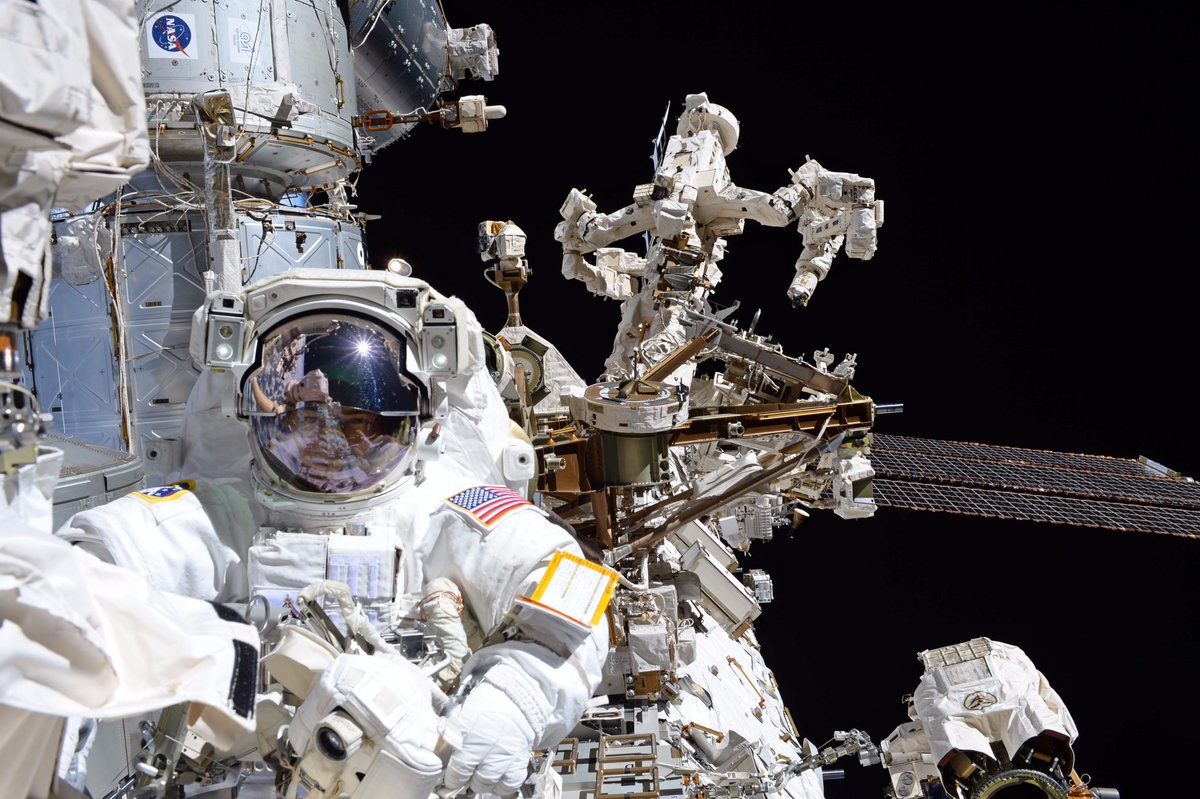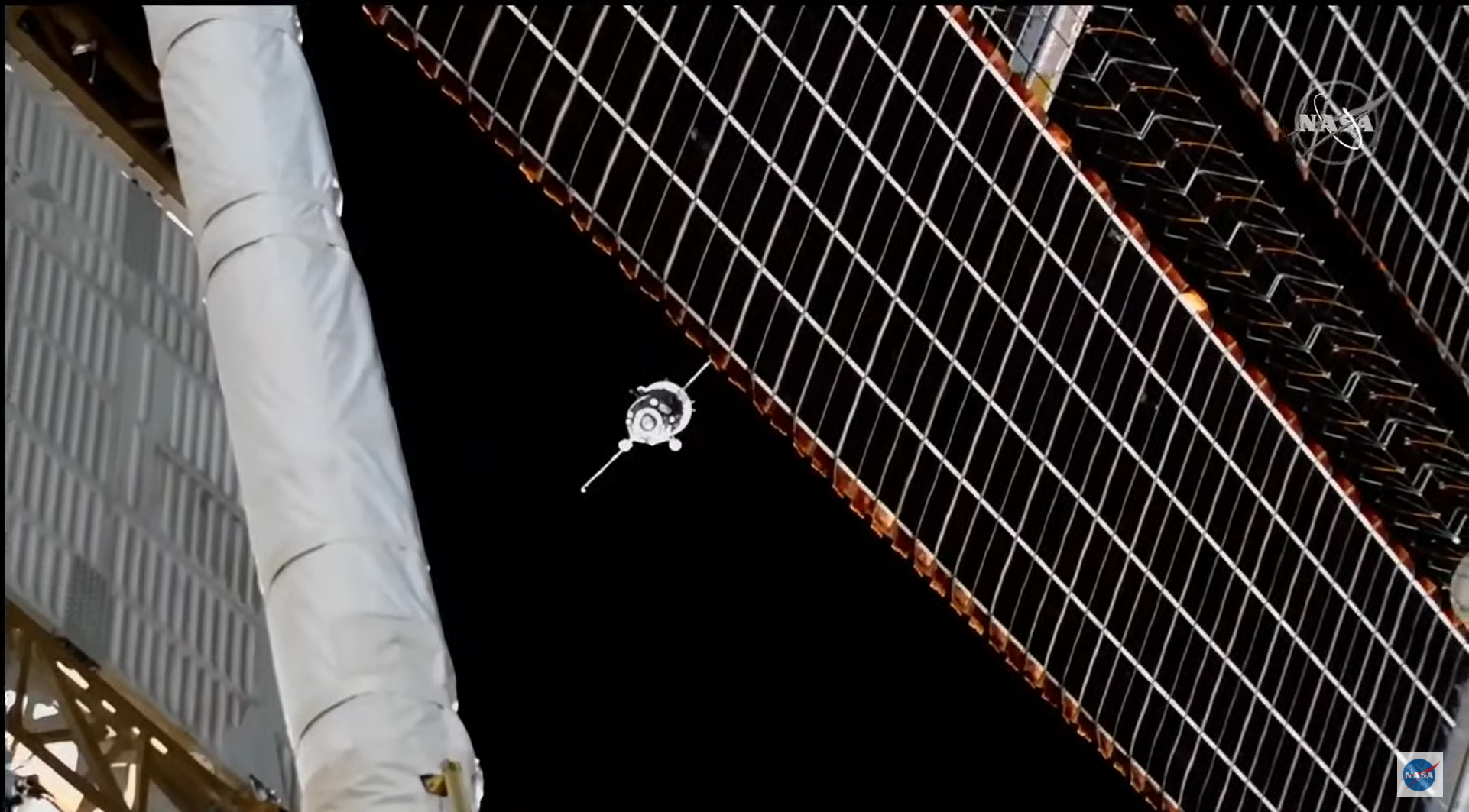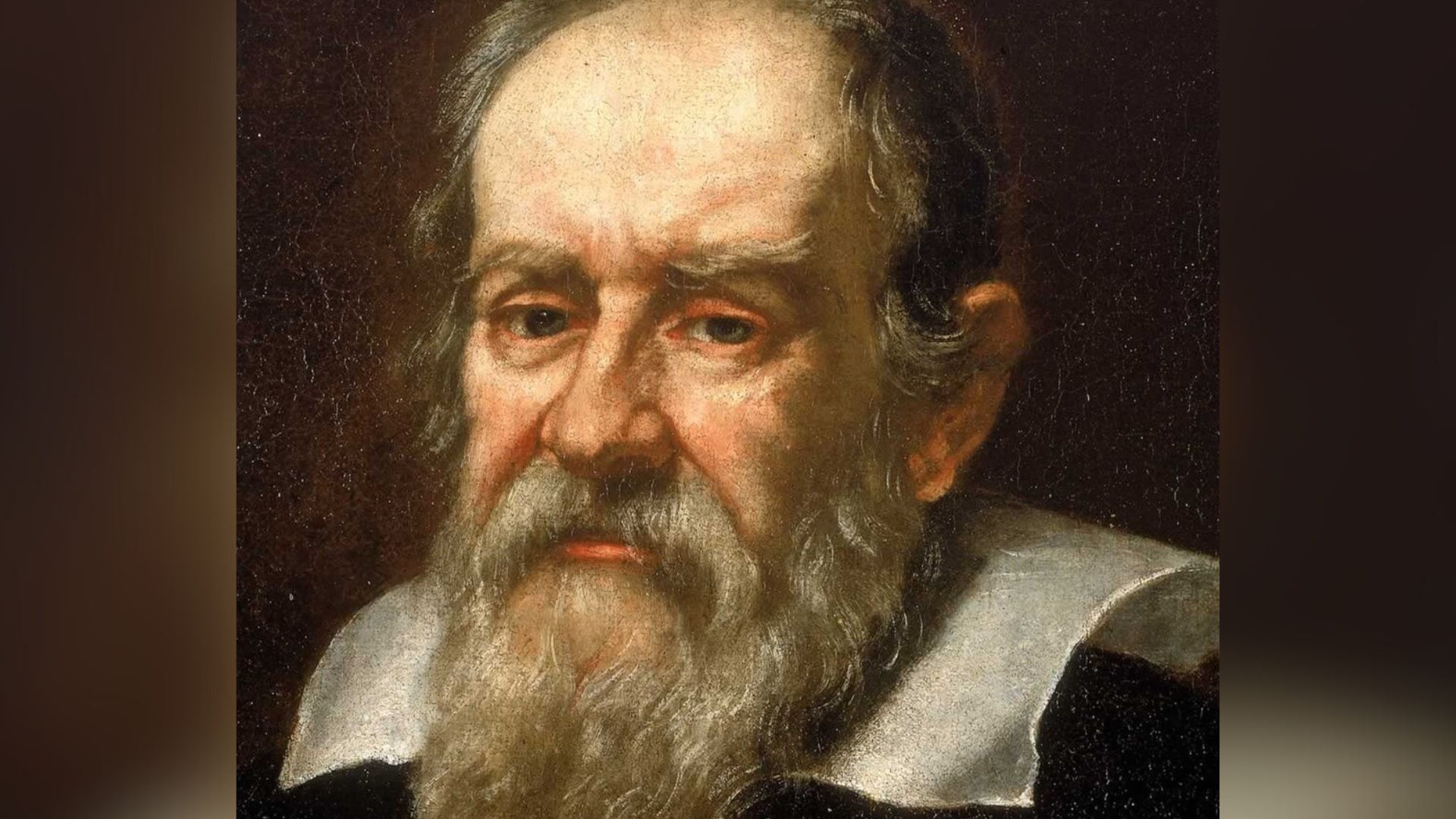No, Russia hasn't claimed it will abandon an American astronaut on the space station
NASA stresses that the space partnership continues.

A Russian-made video posted on Telegram a week ago is causing some anxiety about the status of a NASA astronaut aboard the International Space Station (ISS).
As shared by NASA Watch on Saturday (March 5), the video by Russian state news outlet RIA Novosti shows NASA astronaut Mark Vande Hei being left behind on the ISS rather than departing on a Russian Soyuz spacecraft as planned.
Making things worse are recent comments by Dmitry Rogozin, director-general of the Russian federal space agency Roscosmos. Rogozin has posted many fiery tweets lately about the status of the ISS partnership after numerous international sanctions were imposed against Russia due to the nation's ongoing invasion of Ukraine.
Rogozin also said in a Feb. 26 Russian TV interview that "professionals who work in the space industry, they are very much worried [about sanctions] and they do not know where this is going to go next," according to a machine translation of his comments.
Some media sources are interpreting this video and Rogozin's comments to mean that Roscosmos may be planning to leave Vande Hei behind, or do something else similarly irresponsible on the ISS. That worry seems overblown at the moment, however, given that NASA has stressed that the ISS partnership is continuing as usual.
And Rogozin himself recently said that Vande Hei will come home according to plan, dismissing as "hysterical" stories indicating otherwise.
Russian gov't-controlled RIA Novosti @rianru posted a video on Telegram made by @Roscosmos where cosmonauts say goodbye to Mark Vande Hei on #ISS, depart, and then the Russian segment detaches from the rest of ISS. @Rogozin is clearly threatening the ISS program. #NASA #Ukraine pic.twitter.com/fj2coK1xR1March 5, 2022
Vande Hei is on track to break the American record for longest continuous stay in space, which is currently held by NASA astronaut Scott Kelly, who spent 340 days aloft in 2015 and 2016. Vande Hei is scheduled to depart the ISS in a Soyuz on March 30 with two Russian cosmonauts, Anton Shkaplerov and Petr Dubrov, and land with them in Kazakhstan.
Breaking space news, the latest updates on rocket launches, skywatching events and more!
While NASA is seeking "operational flexibility" in dealing with Roscosmos, the American agency still expects Vande Hei to come down as planned and then fly home to Houston via normal procedures, NASA's associate administrator for space operations Kathy Lueders emphasized late last month.
Officials "are getting ready for Mark to return, and all of the normal operations are in place for that for us to be able to do that," Lueders said during a Feb. 28 press conference about an unrelated private mission called Axiom-1, which is set to launch to the ISS shortly after Vande Hei's departure.
When Vande Hei comes down to Earth, a team of NASA personnel and physicians (flying in from the United States) will be on hand to assist with the long transfer back to Houston. There, Vande Hei will debrief and start his journey of medical recovery, which will take months, since he has been exposed to the microgravity environment since April 2021.

All of this being said, NASA is already creating backups for key space station functions. For example, an already docked Northrop Grumman Cygnus spacecraft is expected to do the first operational reboost of the ISS by a United States spacecraft.
Reboosts, a traditional Russian responsibility performed using Progress cargo spacecraft, occur periodically to assure the orbiting complex doesn't get dragged down by Earth's atmosphere. But Cygnus may be able to do that job on its own, and SpaceX has offered to provide this service as well.
The two sides of the space station — Russian and American — are deeply related; Russia provides propulsion for the entire complex, while the Americans generate the electricity, for example. And recent, deteriorating relations in other space projects with Russian involvement have prompted Rogozin to send a lot of blustery messages on Twitter.
A recent set of Twitter barbs exchanged with Kelly, for example, saw Rogozin at one point tell the astronaut, "Get off, you moron! Otherwise the death of the ISS will be on your conscience." That tweet has since been deleted.
Kelly told CNN that he decided to take on Rogozin after seeing the infamous video of Vande Hei being left behind, which he also described as an unlikely scenario.
"If he's going to act like a child, then I'm going to treat him like one," Kelly said. "It's just unimaginable that the Russian space program would leave a person behind in space that they were responsible for bringing home. I don't see that happening."
Another set of Rogozin's tweets made the rounds in late February as the Roscosmos chief reacted to sanctions on Russian industry announced by U.S. President Joe Biden.
"Do you want to destroy our cooperation on the ISS?" read one of the Feb. 24 tweets from Rogozin (as translated from Russian by Google).

"If you block cooperation with us," Rogozin added in two other tweets that day, "who will save the ISS from an unguided deorbit to impact on the territory of the US or Europe? There's also the chance of impact of the 500-ton construction in India or China. Do you want to threaten them with such a prospect?"
Rogozin, however, is famous in the space world for creating controversial content. That set of tweets in response to Biden's sanctions, for example, also suggested that the people responsible for imposing them may be "suffering from Alzheimer's disease." And when Rogozin banned the sale of Russian engines to the U.S. on March 3, he declared, "Let them fly on something else, their broomsticks."
Rogozin's most famous blustery statement came in 2014, when Russia was under a different set of sanctions for annexing Crimea. He suggested that American astronauts should go to space by trampoline instead of using Russia's Soyuz spacecraft.
Today, however, the situation is much different. In 2014, the Americans indeed depended exclusively on the Soyuz for ISS access because commercial replacements for the space shuttle (which retired in 2011) were not yet ready.
Now, SpaceX's Crew Dragon is a veteran human-flown spacecraft, and NASA ordered three more crewed flights on it just a few days ago. Boeing's Starliner isn't ready yet but may be up for crewed flights in a year or so, pending the result of a second uncrewed test flight scheduled for May.
Follow Elizabeth Howell on Twitter @howellspace. Follow us on Twitter @Spacedotcom or Facebook.

Elizabeth Howell (she/her), Ph.D., was a staff writer in the spaceflight channel between 2022 and 2024 specializing in Canadian space news. She was contributing writer for Space.com for 10 years from 2012 to 2024. Elizabeth's reporting includes multiple exclusives with the White House, leading world coverage about a lost-and-found space tomato on the International Space Station, witnessing five human spaceflight launches on two continents, flying parabolic, working inside a spacesuit, and participating in a simulated Mars mission. Her latest book, "Why Am I Taller?" (ECW Press, 2022) is co-written with astronaut Dave Williams.
